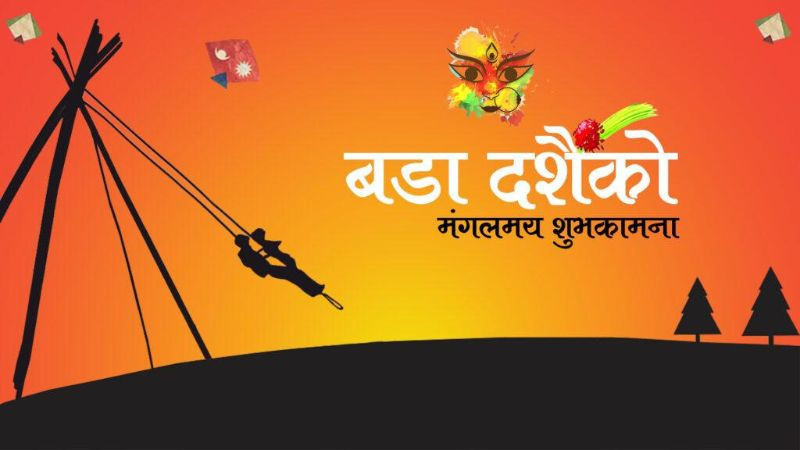Know about Dashain In Nepal Professional
Oct 12th, 2024 at 09:07 Blogs Kathmandu 107 views Reference: 1582Location: Kathmandu
Price: Contact us
Dashain, also known as Bijaya Dashami, is the most significant and widely celebrated festival in Nepal. It marks the victory of good over evil and is a time for family reunions, renewal of relationships, and worship of the divine feminine power. Dashain falls in September or October, depending on the lunar calendar, and lasts for 15 days, with each day holding special religious and cultural importance. This festival is celebrated not only by Hindus but also by Buddhists and people of various communities, making it a truly national celebration.
Historical and Religious Significance
Dashain celebrates the triumph of Goddess Durga over the demon Mahishasura, symbolizing the victory of truth and righteousness. According to Hindu mythology, Mahishasura, a powerful demon, wreaked havoc in the heavens, and the gods turned to Goddess Durga for help. After a fierce battle lasting nine days, Durga slew Mahishasura, marking the victory of good over evil. Similarly, Dashain commemorates the victory of Lord Ram over the demon king Ravana, as narrated in the Hindu epic, Ramayana.
The religious significance of Dashain lies in the worship of Goddess Durga in her various forms. Devotees invoke her blessings for strength, prosperity, and the well-being of their families.
Cultural Practices During Dashain
1. Ghatasthapana (Day 1):
The festival begins with Ghatasthapana, where a ritual is performed to sow barley seeds in a pot of sand. The seeds are nurtured for nine days in a sacred room, and the sprouts, known as "Jamara," are considered auspicious. The room where the Jamara grows is called the Dashain Ghar, and only the head of the family is allowed to enter for the daily worship.
2. Fulpati (Day 7):
On the seventh day, Fulpati, the royal kalash (pot filled with holy water and leaves of sacred plants) is brought from Gorkha to the Dashain Ghar in Kathmandu. The ritual, which symbolizes the arrival of the Goddess, is carried out with a grand ceremony at the Hanuman Dhoka royal palace.
3. Maha Ashtami (Day 8):
The eighth day is Maha Ashtami, where the fiercest forms of Goddess Durga are worshipped. Animal sacrifices, especially of goats, buffaloes, and chickens, are made in temples to honor the goddess. This day is considered particularly auspicious for those seeking strength and protection.
4. Maha Navami (Day 9):
On Maha Navami, the Goddess Durga’s blessings are sought for the protection of homes, vehicles, and machinery. Devotees visit Durga temples, and rituals are performed in households. Military institutions also conduct rituals to offer sacrifices to weapons and vehicles, symbolizing power and strength.
5. Bijaya Dashami (Day 10):
The tenth day, Bijaya Dashami, is the most important day of the festival. On this day, elders bless younger family members by applying "Tika" (a mixture of red vermilion, yogurt, and rice) on their foreheads and offering them Jamara. It is a symbolic gesture of passing on good fortune and power from one generation to the next. Families exchange gifts and feasts are shared, making this a day of happiness and unity.
Family, Feasting, and Flying Kites
Dashain is a time for family gatherings, where relatives living far from each other travel back home to celebrate together. The entire country shuts down for several days as people focus on rituals, feasting, and enjoying time with loved ones.
Feasting is a major part of Dashain, with special dishes like goat meat (khasi ko masu), beaten rice (chiura), and various sweets being prepared. New clothes are worn, and homes are cleaned and decorated as part of the festivities.
One of the most iconic activities during Dashain is kite flying. Colorful kites dot the skies, symbolizing freedom and the joy of life. Playing cards, swinging on traditional bamboo swings (ping), and indulging in cultural performances are also integral to the Dashain celebrations.
Economic and Social Impact
Dashain brings a surge in economic activity across the country, with markets buzzing as people buy new clothes, food, gifts, and decorations. However, for many, this can also be a time of financial strain, as the cultural pressure to spend heavily on celebrations affects both the rich and the poor.
Despite this, Dashain fosters social harmony and communal ties. It’s a time when forgiveness is practiced, relationships are renewed, and a sense of unity and belonging is reinforced among Nepalese people. The sense of community extends beyond religious boundaries, as people from various faiths come together to celebrate.
Conclusion
Dashain is more than just a festival in Nepal—it's a time for family, faith, and fun. It carries deep religious, historical, and cultural significance, making it an integral part of Nepalese life. From the grand rituals to the joyous family reunions, Dashain symbolizes the victory of good over evil, reinforcing hope and happiness in the hearts of people across the nation.


